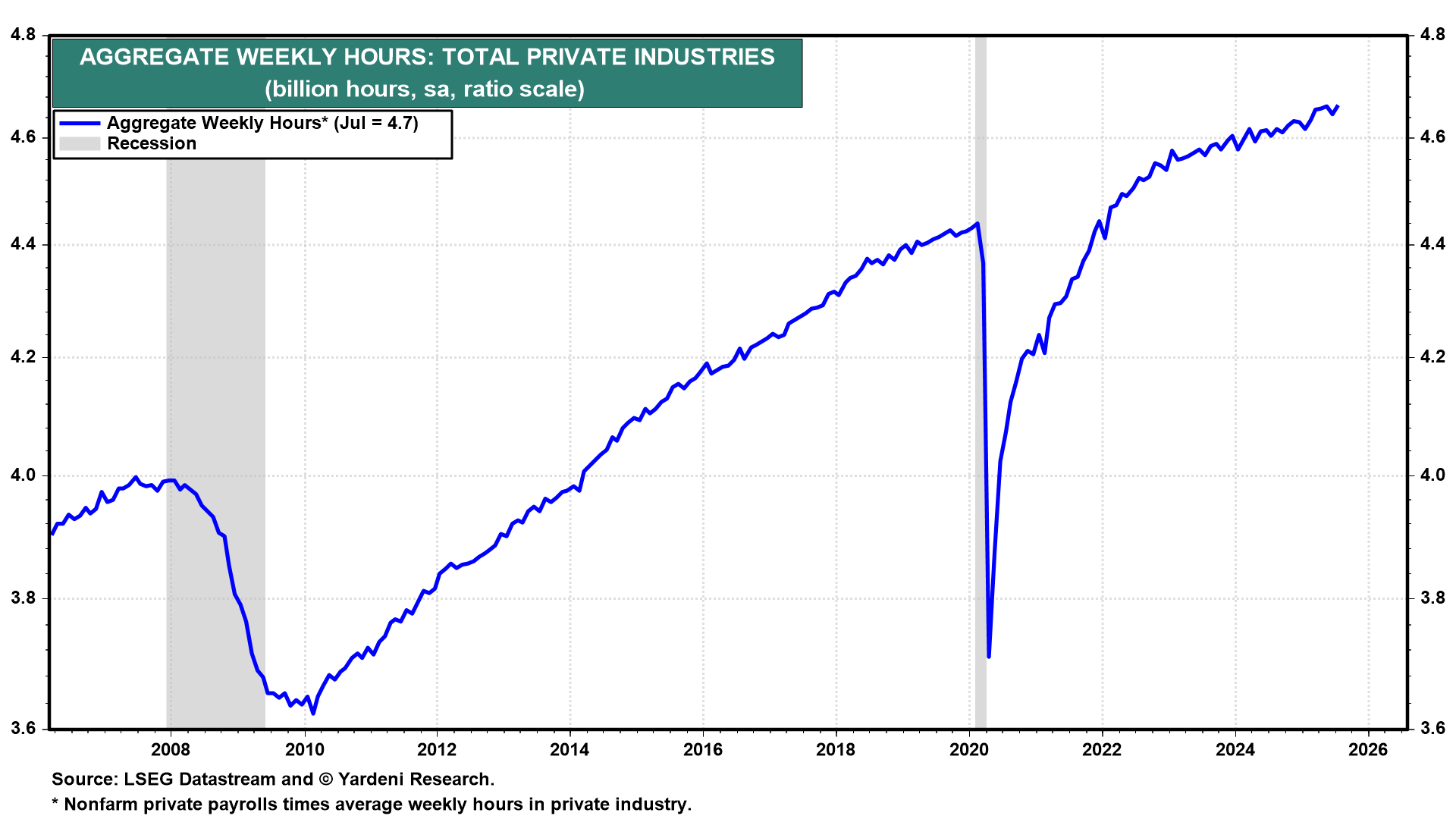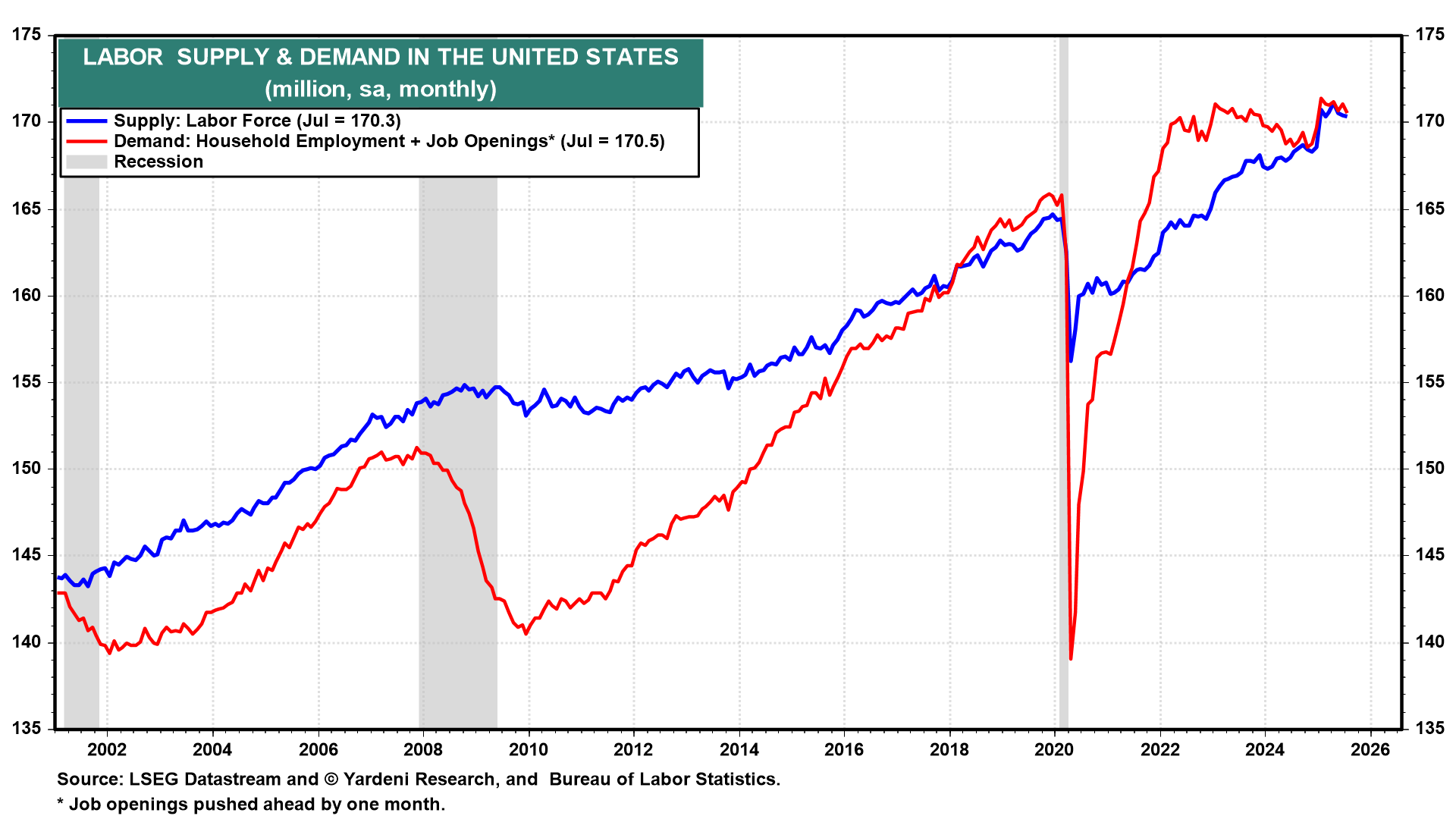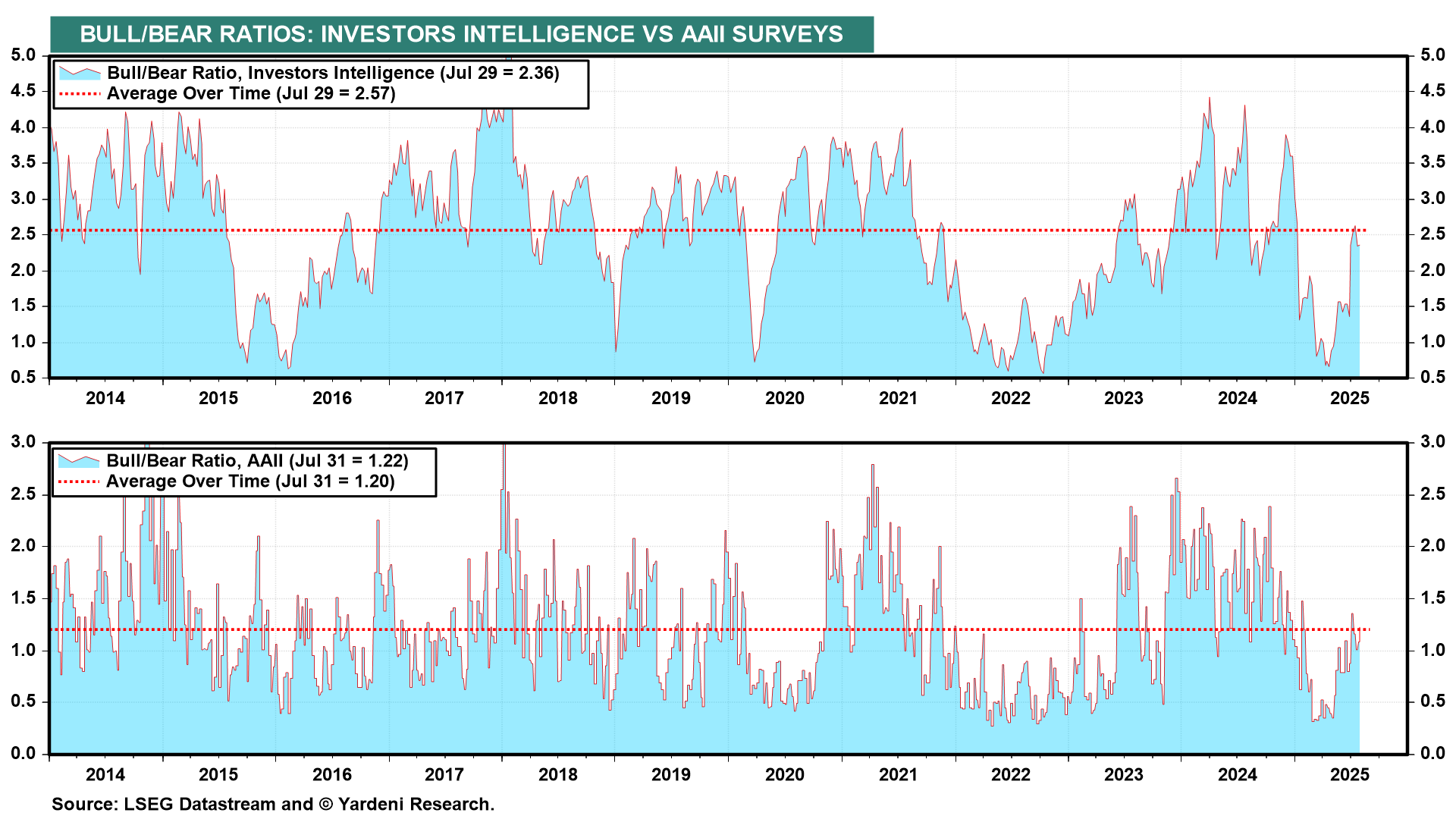U.S. stocks rise on Fed cut bets; earnings continue to flow
On Friday, President Donald Trump slapped tariffs on all of America’s trading partners. Friday’s employment report was shockingly weak. So the President fired the commissioner of the Bureau of Labor Statistics (BLS) because, he said, she "RIGGED" the data. On Friday, Fed Governor Adriane Kugler resigned, allowing Trump to more quickly appoint someone who could replace Jerome Powell as Fed chair next May. On Friday, Trump said on his social media feed that he had "ordered two nuclear submarines" to be repositioned in response to online threats from Russia’s former president, Dmitri Medvedev, a rare case of potential nuclear escalation between the superpowers.
Gold soared. Stocks tanked. Yields fell. The odds of a recession rose from 12% to 17% according to Polymarket.com. The odds of a recession remain low because the odds of Fed rate cuts have increased. According to the CME FedWatch, the odds of a Fed rate cut in September are up to 80.3%.
Meanwhile, the stock market has been highly volatile this year compared to its average performance over the past 10 years (chart). It is heading into a seasonally choppy season, which typically lasts from August through October. It is likely to do so again following Freaky Friday. But then we can still look forward to a year-end rally up to our 6500-6600 target for the S&P 500. We are still targeting the price of gold at $4,000 per ounce by the end of this year.
What about that ugly employment report on Friday? It wasn’t as bad as widely perceived. Payroll employment rose to a new record high of 160 million in July despite the weak 73,000 gain and the 258,000 downward revision in May and June. Aggregate hours worked, which is payroll employment times the average workweek, also rose solidly, by 0.4% m/m, to a new record high (chart).
The downward payrolls revisions in May and June make sense given the uncertainty faced by employers during those months as a result of Trump’s Tariff Turmoil. In any event, the courts may be about to rule that the President does not have the authority to impose tariffs in the first place. If so, lots of importers will be asking the Treasury for refunds of the duties they paid!
Some of the weakness in payrolls reflects a shortage of workers, as evidenced by the lack of growth in the labor force so far this year (chart). That might be partly related to Trump’s very effective immigration policies. We expect that faster productivity growth will more than offset the slowdown in the labor force. That should be the case during Q2, even more so after the downward payrolls revisions, given that real GDP rose 3.0% (saar) during the quarter.
Meanwhile, S&P 500 forward earnings per share rose to yet another record high during the week of July 31 (chart). It is now at $301.44. That’s impressive considering that tariffs are a tax on businesses.
The S&P 500 hit its latest new record high of 6389.77 on July 28. Yet the two Bull/Bear ratios we monitor remained relatively subdued during the last week of July (chart). In other words, sentiment wasn’t overly bullish; bullishness is bearish from a contrarian perspective. This is consistent with our view that, rather than yet another correction this year, we are more likely to see seasonal choppiness.
What about the Fed? We are sticking with our none-and-done scenario for a 2025 cut in the federal funds rate. That’s because we expect that the next batch of inflation indicators will show that tariffs are boosting consumer price inflation, especially of durable goods (chart). We also expect to see more signs of life in the labor market.

